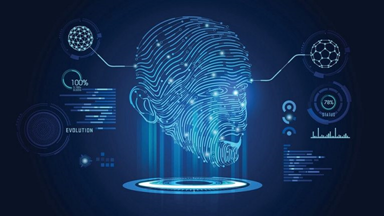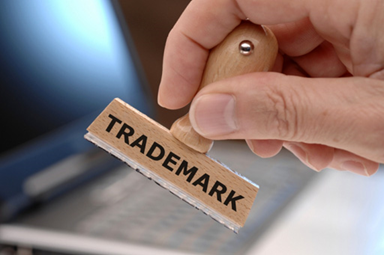DEFINITION
1. Copyright means rights of organizations and individuals to works they have created or own.
2. Copyright-related rights (below referred to as related rights) means rights of organizations and individuals to performances, phonograms, video recordings, broadcasts and encrypted program-carrying satellite signals.
AUTHOR, OWNER OF COPYRIGHT
1. Organization and individual having protected copyrights include persons who have directly created the work and copyrights owners stipulated from Article 37 to Article 42 of IP Law.
2. Authors and owners of copyrights stipulated in paragraph 1 of this Article include Vietnamese organizations, individuals; foreign organizations, individuals of which works firstly published in Vietnam and has not been published in any foreign country or simultaneously published in Vietnam in a duration of 30 days from its first publication in other nations; Foreign organizations, individuals of which works eligible for protection in Vietnam in accordance with international treaties to which the Socialist Republic of Vietnam is party.
FORM OF PROTECTED WORKS
1. Literary, artistic and scientific works protected including:
a) Literary and scientific works, textbooks, teaching materials, and other works expressed in forms of letters or other writing characters;
b) Lectures, presentations and other speeches;
c) Journalistic works;
d) Musical works;
d) Dramatic works;
e) Cinematographic works and works created by similar methods (hereinafter referred to as cinematographic works);
…
2. Derivative works shall only be protected according to paragraph 1 of this Article if they do not infringe the copyrights in respect of the works used to make derivative works.
3. Protected works stipulated in paragraphs 1 and 2 of this Article must be created directly by author’s intelligence without reproducing others’ works.
SUBJECT MATTER EXCLUDED FROM COPYRIGHT PROTECTION
1. Information just for the purposes of communication;
2. Legal normative documents, administrative documents, other documents in the judicial sector and the official translation
3. Processes, systems, method of operation, definitions, principles and statistics.
PROTECTED ORGANIZATIONS, INDIVIDUALS OF RELATED RIGHTS
1. Actors, singers, musicians, dancers and others who perform literary and artistic works (hereinafter referred to as performers);
2. Organizations, individuals that are owners of the performances stipulated in Article 44.1 of this Law.
3. Organizations, individuals that make fixation of sounds, images of a performance for the first time or other sounds and images (hereinafter referred to as producers of phonograms).
4. Organizations that take the initiative of and carry out the broadcast (hereinafter referred to as broadcasting organizations).
SUBJECT MATTER OF RELATED RIGHTS PROTECTION
1. A performance shall be protected if it is one of the following cases:
-
Performance of Vietnamese citizens performed in Vietnam or abroad;
-
Performance of foreigners performed in Vietnam;
-
Performance fixed on a phonogram that is protected in accordance with Article 30 of this Law;
-
Performance that has not been fixed on a phonogram but is broadcasted and such broadcast are protected in accordance with Article 31 of this Law;
-
Performance protected in accordance with international treaties to which the Socialist Republic of Vietnam is party.
2. A phonogram shall be protected if it is one of the following cases:
-
Phonogram of producer who is with Vietnamese nationality;
-
Phonogram of the producer protected in accordance with international treaties to which the Socialist Republic of Vietnam is party.
3. A broadcast, a satellite signal carrying encrypted program shall be protected if it is one of the following cases:
-
Broadcast, satellite signal carrying encrypted program of an organization with Vietnamese nationality;
-
Broadcast, satellite signal carrying encrypted program of the organization protected in accordance with international treaties to which the Socialist Republic of Vietnam is party.
4. Performances, phonograms and broadcasts and satellite signals carrying encrypted program shall only be protected as stipulated in paragraph 1, 2, 3 of this Article provided that they do not influence the copyrights exercise.
COPYRIGHT
Copyrights to works stipulated in this Law include personal rights and property rights.
PERSONAL RIGHT
Personal rights include the following rights:
1. To name his or her work;
2. To put his or her real name or pseudonym in the work; to have his or her real name or pseudonym mentioned when his or her work is published or used;
3. To publish his or her work or authorize another person to do so;
4. To protect the integrity of his or her work, to object to any alteration, mutilation, distortion or other modification in any form which prejudice against his or her honor and prestige.
PROPERTY RIGHT
1. Property rights include the following:
-
To create the derivative work;
-
To perform the work to the public;
-
To reproduce the work;
-
To circulate to the public the original or copies of the work;
-
To communicate the work to the public by wire or wireless means, through electronic information network or by any other technical means;
-
To lease the original or copies of a cinematographic work or a computer program.
2. The rights referred to in clause 1 of this Article shall be exercised by the author [or] the owner of exclusive copyright or by another person with the owner’s permission in accordance with this Law.
3. Organizations, individuals who exploit or use one, several or all of the rights stipulated in paragraph 1 of this Article and paragraph 3 of Article 19 of this Law must ask for permission from the copyright owners and pay them with royalties, remuneration and other material benefits.
COPYRIGHT TO CINEMATOGRAPHIC WORKS AND DRAMATIC WORKS
1. Persons who are directors, editors, cameramen, stage managers, composers, art-designers, sound-men, lighting-men, studio artists, studio-instrument managers, high-tech makers and others doing creative jobs related to cinematographic works shall have the rights as stipulated in Article 19.1, 2 and 4 of this Law and other rights as agreed.
2. Persons who are directors, editors, choreographer, composers, art-designers, sound-men, lighting-men, stage artists, stage-instrument managers, high-tech makers and others doing creative jobs related to dramatic works shall have the rights as stipulated in Article 19.1, 2 and 4 of this Law and other rights as agreed.
3. Organizations and individuals who invest finance and other material and technical facilities in making cinematographic works and dramatic works shall be the rights owners stipulated in Article 19.3 and Article 20 of this Law.
4. Organizations and individuals stipulated in Paragraph 2 of this Article shall have the obligations to pay royalties, remuneration and other physical benefits determined by agreement with persons stipulated in Paragraph 1 of this Article.
COPYRIGHT TO COMPUTER PROGRAMS AND COMPILAITONS
1. Computer program is a set of instructions which is expressed in forms of commands, codes, diagrams or the like, to be readable by a computer in order to bring a certain result. Computer programs shall be protected as a literary work regardless of them being expressed in the source code or object code.
2. Compilation is a collection of data in a creative way showed in the selection, arrangement of documents in electronic form or others. The copyrights protection of compilation does not include the protection of documents themselves and must not prejudice the copyrights of these documents.
COPYRIGHT TO FOLK ARTISTIC AND LITERARY WORKS
1. Folk artistic and literary works mean the productions of collective creations based on traditions of a community or individuals reflecting expectations of such community of which the expression appropriate to its cultural and social characters, and its criteria and values are handed down orally or by imitation or the like, Folk artistic and literary works comprise the following:
-
Folk tales, poetry and riddles;
-
Folk songs and instrumental folk music;
-
Folk dances, plays, ceremonials and games;
-
Musical instruments, drawings, paintings, sculptures, architectural models which are created in any materials.
2. Organizations and individuals when using such works must indicate the origins of those expressions of folklore and protect their real values.
USE OF PUBLISHED WORKS WITHOUT OBTAINING PERMISSION AND PAYINIG ROYALITIES REMUNERATION
1. The following forms of use of published works without obtaining permission and paying any royalties, remuneration:
-
Self- reproducing one single copy for the purposes of science research and individual teaching;
-
Reasonable quoting works without alteration of their contents for commentary or for illustration in one’s own works;
-
Quoting from a work without alteration of their contents for use in articles, periodic journals, radio and television programs and documentary films;
-
Quoting from a work for teaching in schools without alteration of the contents not for commercial purposes;
-
Copying a work for archives in libraries for the purposes of research;
-
Performing dramatic works and other forms of performing arts in cultural gatherings or in promotional campaigns without any form of charges;
-
Directly recording and reporting performances for public information and educational purposes;
-
Taking pictures of or televising works of fine art, photographic, and applied art that have already been publicly displayed for introduction purposes;
-
Translating a work into Braille or the like;
-
Importing copies of others’ works for personal use only.
2. Persons and legal persons who use the works as stipulated in Paragraph 1 of this Article shall not make any affect to normal exploitation of the works or prejudice the rights of the authors or copyright owners; they must provide information about the name of the authors and origins of works.
3. Any use of works as stipulated in paragraph 1 of this Article is not applicable to architectural, fine art works or computer programs.
USE OF PUBLISHED WORKS WITHOUT OBTAINING PERMISSION BUT PAYINIG ROYALITIES REMUNERATION
1. Broadcasting organizations using published works for the purpose of carrying out broadcasting programs with sponsorship, advertisements or collection of money in any form shall not be liable for obtaining permission from, but shall be liable to pay royalties or remunerations to, the copyright owner in accordance with the Government regulations,
2. Organizations and individuals when using the works stipulated in paragraph 1 of this Article must not influence the normal exploitation of works and must not prejudice rights of authors or copyright owners, and must provide information about the name of the author and origin of the works.
3. The use of works referred to in clause 1 of this Article shall not apply to cinematographic works.
TERMS OF COPYRIGHTS PROTECTIONS
1. Personal rights stipulated in Articles 19.1, 19.2 and 19.4 of the IP Law shall be protected indefinitely.
2. Personal rights stipulated in Article 19.3 and property rights stipulated in Article 20 of the IP Law shall be protected with the following terms:
-
Cinematographic works, photographic works, dramatic works, applied art works, anonymous works shall have the term of protection of 50 years from their first publications. If within 50 years from the fixation, cinematographic work, dramatic works have not been published, the term of protection shall be 50 years from the fixation date of the work; with regard to an anonymous work, when information relating to the author is available, the term of protection shall be counted as stipulated in paragraph b of this clause;
-
Other works of any other type not referred to in clause 2(a) of this Article shall have the term of protection being during the life of the author and for 50 years from the year of his or her death; in respect of works created by co-authors, the term of protection shall be ended at the 50th year after the year of death of the last surviving co-author.
-
Terms of protection stipulated in paragraph 2.a and 2.b of this Article shall be ended at 24 o’clock of the date of 31 December of the year when the protection term ends.
.png)
.jpg)
.jpg)
.jpg)
.jpg)
.jpg)
.jpg)


